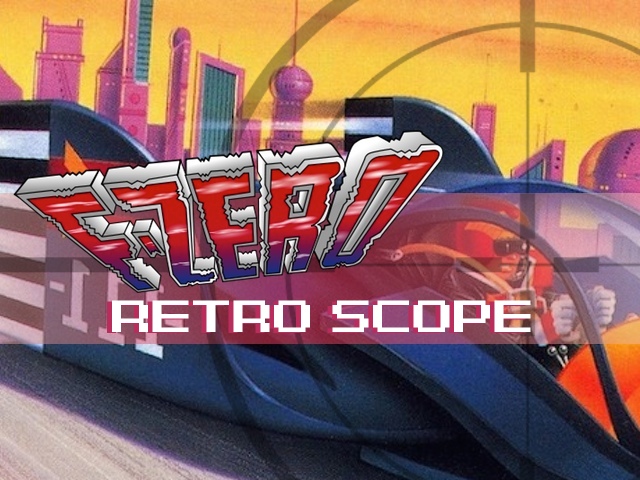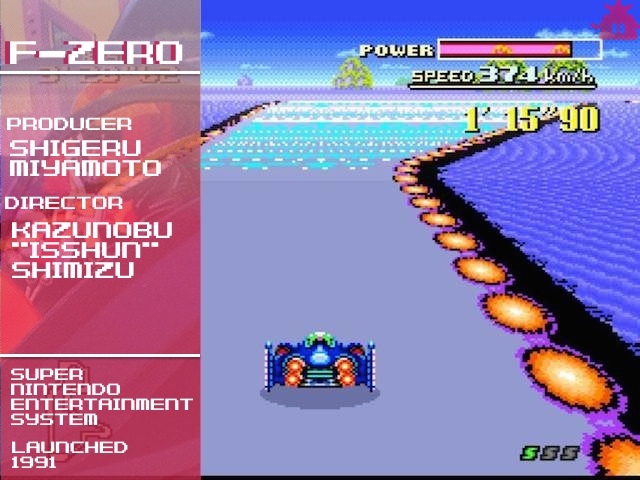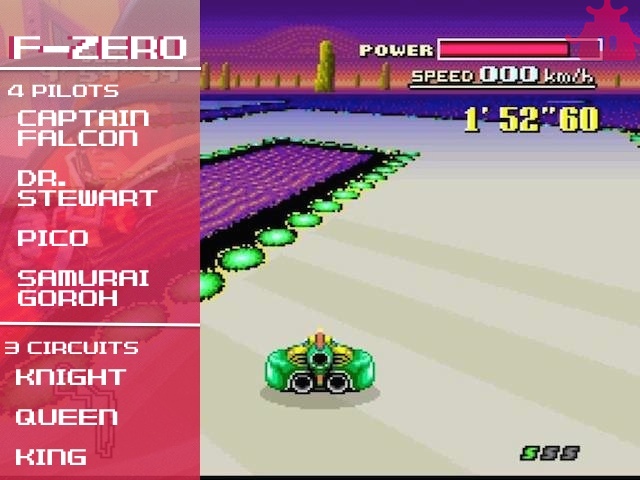
F-Zero GX on GameCube and (to a lesser extent) F-Zero X on Nintendo 64 are both known for their devout followings, but sometimes as fans extol the virtues of those two titles, the original game can get lost in the shuffle. Which is a shame, because it’s an incredibly important piece of Nintendo’s history as a developer, as well as a racing game in general. For some folks, though, it might be hard to look beyond the game’s comparatively simple graphics and appreciate what makes it such a big deal. Just why is F-Zero special? Read on to find out!
Released in 1991, F-Zero was a launch title for Super Nintendo. When the game landed on the new console, there was nothing quite like it. For one, SNES had brought with it a new graphics mode called Mode 7, which allowed for the rendering of pseudo-3D visuals. Mode 7 was used heavily in the marketing for SNES, especially in publications like Nintendo Power, where advertisements and articles showed off the perspective effects that the console was capable of producing. It was gorgeous to fans of the era, who marveled at the sight of the race track disappearing into the distance.

Super Mario World also utilized Mode 7 (perhaps most memorably in the final battle with Bowser!), but not in the way that F-Zero did. The entire game revolved around the feature, with its race tracks flowing into the screen and presenting an unparalleled sense of depth. Racing titles of the past had attempted to recreate the sensation of driving on highways and the accompanying thrill of speed that comes with it, to varying degrees of success. Titles like Sega’s OutRun immediately spring to mind when thinking of the best racing games of the 1980s, for instance, but even it didn’t come close to the groundbreaking feats of F-Zero.
Beyond the unprecedented quality of visuals that Mode 7 afforded it, F-Zero also helped to pioneer the futuristic sci-fi sub-genre of racing games. The development team at Nintendo (which included Shigeru Miyamoto and director Kazunobu “Isshun” Shimizu) went in a radically nontraditional direction with F-Zero, abandoning cars and highways for the floating speedways and hovercrafts that the series is famous for. To early adopters of SNES, the game represented a seismic shift in the racing landscape with its startling and unique setting and vehicles. What’s more, F-Zero was blisteringly fast, too, demanding precision controls in a way that had never been asked before.

The slightest error could send a racer hurtling out of control, but as is often the case with a Nintendo game, F-Zero was perfectly balanced and fine-tuned. The game’s challenge was never an unfair one, and players garnered a true sense of accomplishment from learning the ins and outs of the various race tracks and the quirks of each vehicle. With three leagues (Knight, King, and Queen) comprised of fifteen tracks, there was plenty of opportunity to sharpen one’s skills, and coupled with the potent graphics, anyone who played F-Zero was glued to the screen for hours.
Besides its signature gameplay, F-Zero also introduced iconic racers like Captain Falcon and his ship the Blue Falcon, as well as courses like Mute City, all of which have been mainstays for years now and appearing in each subsequent installment. What’s more, the game went on to inspire a number of others, including the WipeOut series on Sony’s PlayStation consoles, and even Fast Racing Neo, which just launched on the Wii U eShop. The video game industry would be a very different place if not for Nintendo’s pioneering racing title. With its timeless mechanics, excellent soundtrack, and fantastic SNES visuals, F-Zero deserves to be remembered, played, and embraced by the players of today.




 ShareThis
ShareThis






Too bad they won’t make another one. It’s been a LONG time since the last one on console. I wish they would bring back Pilotwings! I had so much fun with the first two games, the 3DS one wasn’t really a true sequel.